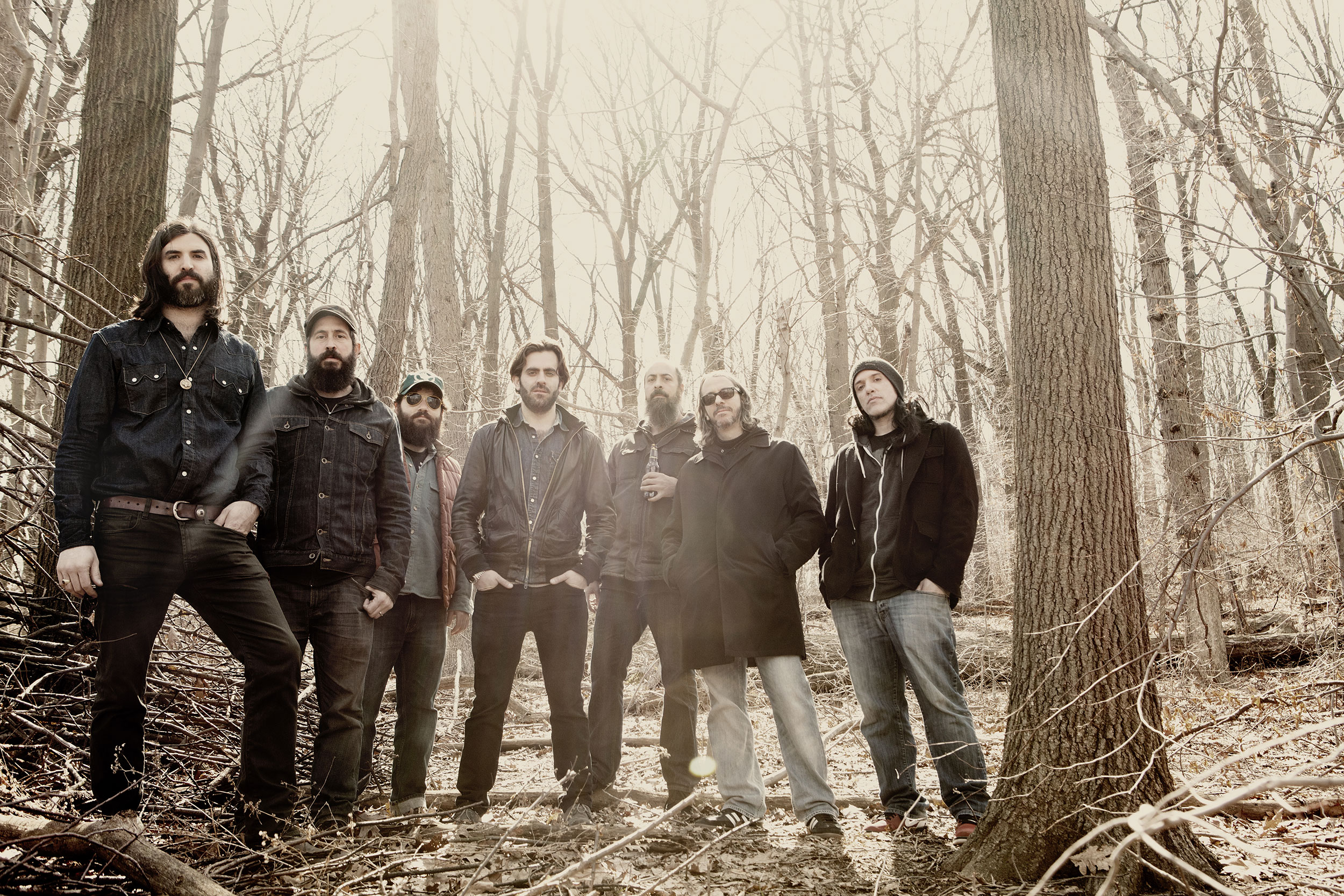Spotlight: The Budos Band

At the end of Jim Henson’s The Dark Crystal, peace and order are restored to the world after the kind and benevolent Mystics unite with the dark and evil Skeksis. In most minds, Daptone Records is more closely aligned with the Mystics’ ethos, but the House of Soul’s analog beauty requires a more diabolical counterpart to round out its perspective. And The Budos Band, a nine-piece instrumental group born out of Staten Island that serves as Daptone’s dark side, has been lurking in the shadows since the Brooklyn label’s earliest days.
While Budos may seem like an outlier of the Daptone universe, the band actually formed directly out of one of the label’s forebears.
“We had another band going already—it was an all-over-the- place, typical ‘90s disaster mix of genres,” drummer Brian Profilio recalls. “Late night, most of the band would go home, but me and the bass player and [guitarist Tommy Brenneck] would stay and started writing funk songs. One night, we heard Antibalas was playing at No Moore [the Tribeca club that hosted many of the ensemble’s wild, early New York shows]. It was their first show at No Moore and that night we rolled down there just to check them out. We’d never heard music like that before and our minds were blown.”
Building off that initial spark, they began exploring this African-based funk calling under the name Los Barbudos. However, quickly realizing that Afrobeat necessitates a front- person like the genre’s founder Fela Kuti, the committed instrumentalists started condensing their jams and solidifying their lineup. They also rebranded themselves as The Budos Band.
Given their mixture of first-wave British metal and African psychedelic funk, it’s difficult to tag The Budos Band with a specific label, aside from the oddly inappropriate “Afrobeat.”
“We would never use [that term] to describe our music,” explains Brenneck, who has been drafted to perform with Antibalas at various times and also played guitar with Sharon Jones & The Dap-Kings for many years. “We started off being inspired by Antibalas, but we made a really conscious decision to not play their music.”
As such, while The Budos Band may share some common rhythmic foundations with more traditional Afrobeat bands, their sonic stew has more in common with their self-professed influences Black Sabbath and Deep Purple.
“We always loved that kind of heavy shit,” says Profilio, but to bring that element to the funk foundation took discovering Ethiopian psych-rock. “Some of those Ethiopian songs are really fuzzy and rocky. I think that was the transition. It’s OK to have a fuzzed-out guitar. It’s OK to really rock the fuck out and still play funky dance music.” Baritone sax player Jared Tankel adds, “Our song titles are like, ‘Black Venom.’ We want to be dark and bring that element.”
The band established their dimly lit corner of the world over the course of three albums recorded and mixed with Daptone co-founder Gabe Roth, the last of which, The Budos Band III, came out in 2010. They recently released their fourth album, Burnt Offering, a masterpiece of raw energy vibrating with odd harmonics and brutal horn blasts. Mixed by Brenneck, the album is full of dirty drums, barely in-tune electric organ and sounds that feel like the soundtrack to Dazed And Confused‘s moon tower keg party. While still clearly a Budos record, it’s also a departure from the warm, inviting atmospheres that Roth and Daptone made their names churning out. Profilio acknowledges the shift: “There’s a four-year gap between the third album and this one, and we went through a lot of changes, sonically.”
As far as whether it was a conscious decision to make something more akin to the psych-rock coming out of places like Austin and Cincinnati, Tankel explains, “It’s natural, but it’s intentional also. Part of the reason it took so long between Budos III and this record is that it took us a minute to figure out how to do it naturally.”
The extended process also involved developing the tunes as a group, rather than working off any one member’s compositions. “On previous records, people would come in with songs that were 75 percent there already, but this record was way more collaborative.”
Burnt Offering was worth the wait. Now that the record is out, the band doesn’t have any intention of letting that much time pass before they return to the studio to work on their fifth release.
“That was four years of growth and figuring shit out, and now we’re just in the zone— we could write a record in a couple weeks,” says Brenneck. “We all want to do that and want to keep going with this pattern with Brian’s art on the cover and the fuzzy, psychedelic sounds. It took us all this time and all these records to chip away at the Budos stone and make this music that’s now ours.”
And so, like the shard of the aforementioned The Dark Crystal, the Budos stone remains at the heart of the Daptone monolith’s dark side.



















